Ecuador Offers More than the Galapagos Islands
The world famous Panama Hat was invented in Ecuador. The aborigines of Ecuador used tocas made of toquilla straw from the locally grown, “Carludovica Palmata,” to protect themselves from the sun. The lightness and flexibility of this fiber favored its use in making hats. The construction of the Panama Canal caused a great demand for toquilla straw hats, making them famous and giving them the moniker of the, “Panama Hat.”

The turquoise waters of volcanic lakes set in caldera’s that are miles and miles in circumference, snow-capped mountains that offer treks up to 20,000 feet, UNESCO World Heritage Sites from pre-Colombian civilizations to ornate colonial Spanish city centers, and the surprisingly untouched and less-traveled Ecuadorian Rainforest, make Ecuador a great holiday destination.
Play in the Ecuadorian Rainforest
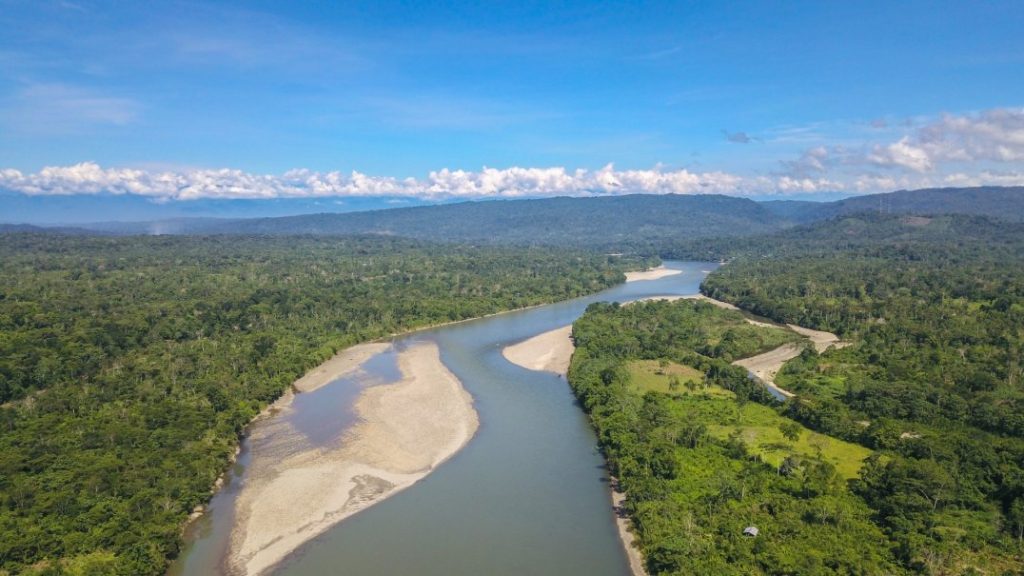
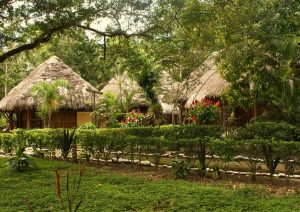
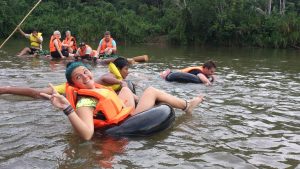
Enjoying perpetual springtime weather, the Ecuadorian Rainforest is exceptionally rich in biodiversity. And, Mariana Miller Island Biological Reserve and Lodge sits on 345 acres of virgin rainforest and right next to the village of Puni Bocana, home of the Sinchi Runa indigenous community, at the confluence of the Puni and Arahuano rivers. Trek the rainforest with expert guides during the day, experience the darkness of the forest on a night walk, tour the rivers in a motorized canoe, or meet the Sinchi Runa indigenous people. The Sinchi Runas speak the ancient Kichwa language and are a festive and hardworking people with their own customs and folklore. Or, just relax with a book in your cabana overlooking the Puni river.
Ride on the Devil’s Nose Train from Alausi to Sibambe
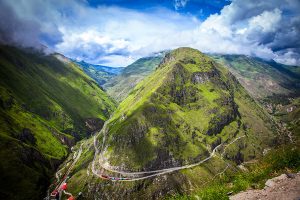
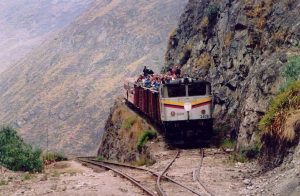
The biggest complication faced in the construction of the Trans-Andean railroad was Devil’s Nose, a mountain with almost perpendicular walls. To overcome this obstacle, the railroad tracks had to be designed with numerous switchbacks and steep ascents and descents. The train cuts down a steep section and rolls past a junction on the track, then stops and rolls backwards down the next bit. It remains an engineering marvel to this day.
Climb the still-active and snow-capped 19,347-foot Cotopaxi Volcano
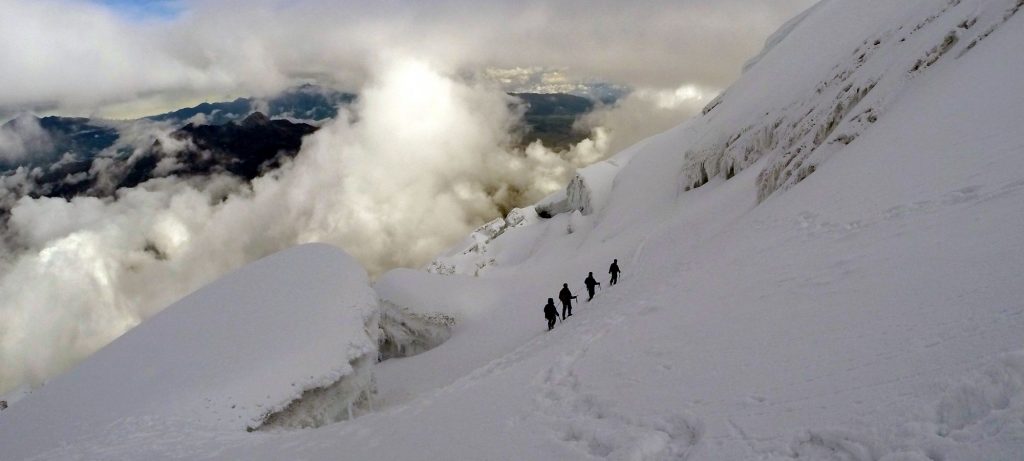
Cotopaxi is an active stratovolcano with a perfectly conical shape. Guided tours take hikers to a parking lot at 14,700 feet. Base Camp is 1,000 feet up. On the following day, hikers head to the frozen summit. Those who summit, will find an impressive 820-foot deep crater at the peak. The hike is technical and very difficult.
Watch crabs go about their business on Isla de la Plata
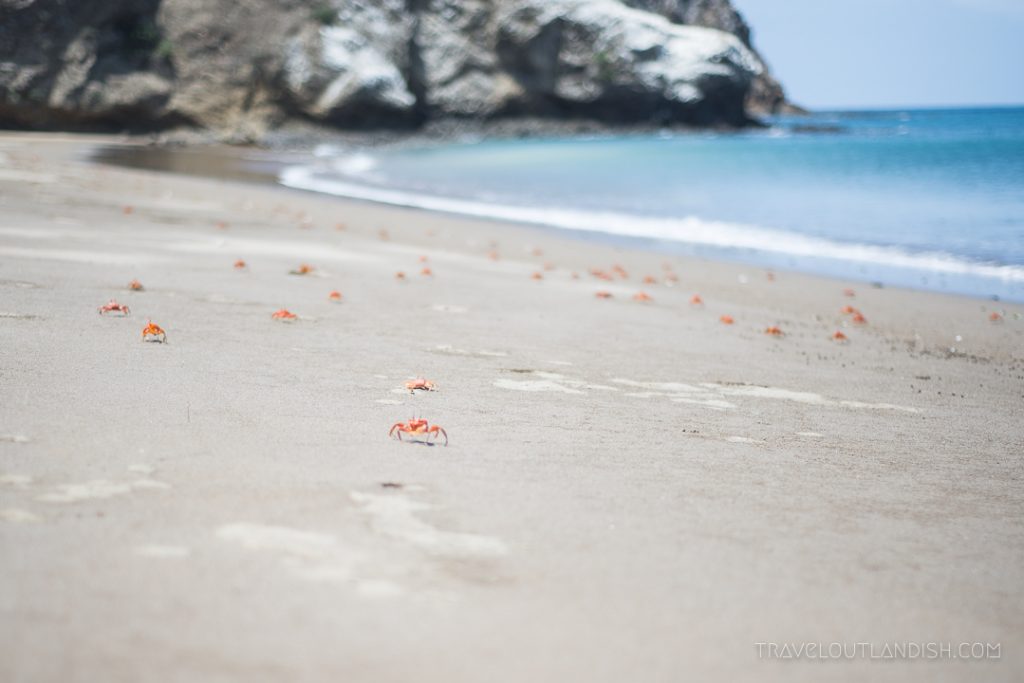
Isla de la Plata is an uninhabited island rich in biodiversity similar to the Galapagos archipelago. The two-square mile island is packed with a plethora of birds, including different types of boobies, frigate birds, albatrosses, pelicans, and more. There are lizards, iguanas, turtles, crabs, and sea lions, dolphins and whales, all of which can be seen with relative ease. What you won’t find are the giant tortoises and penguins of the Galapagos.
Walk the streets of UNESCO Listed Colonial Quito
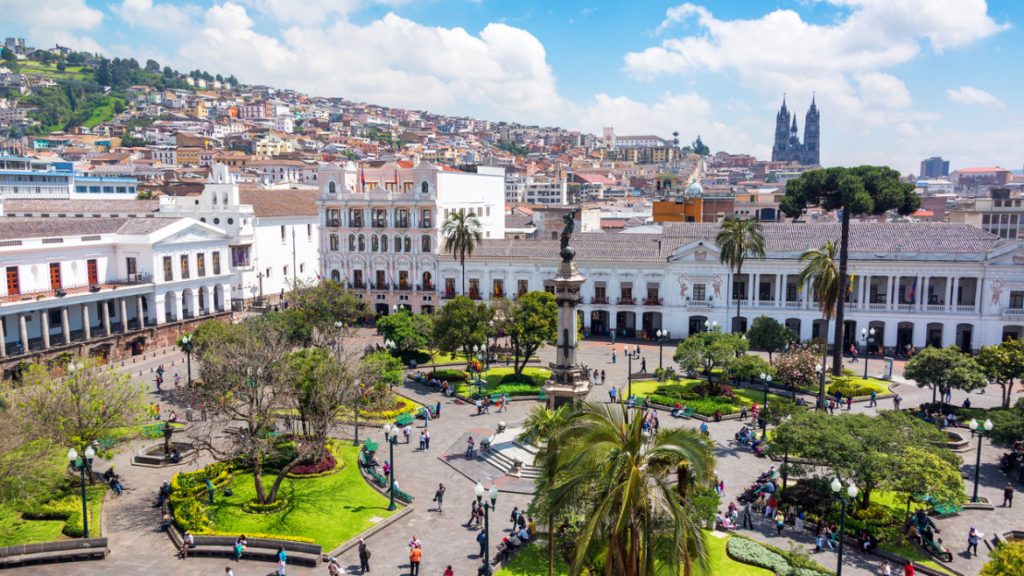
Quito, the capital of Ecuador, was founded in the 16th century on the ruins of an Inca city and stands at an altitude of 10,000 feet. Despite the 1917 earthquake, the city has the best-preserved, least altered historic center in Latin America. The monasteries of San Francisco and Santo Domingo, and the Church and Jesuit College of La Compania, with their rich interiors, are pure examples of the Baroque school of Quito, which is a fusion of Spanish, Italian, Moorish, Flemish and indigenous art. Walk the narrow cobblestone streets, buy souvenirs, dine in quaint restaurants, and take in the magnificent architecture.
Walk the rim of the Quilotoa Volcano
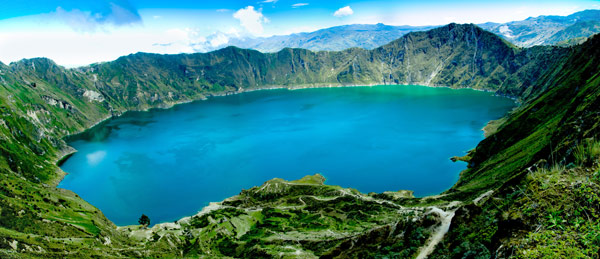
When Quilotoa volcano last erupted in 1280, it left behind a gaping caldera 1.8 miles across, which is now a beautiful lake. You can hike the 4.7 mile-long crater rim at 12,000 feet, for amazing views of the brilliant turquoise water and the volcanic mountains beyond.
Swing at the End of the World
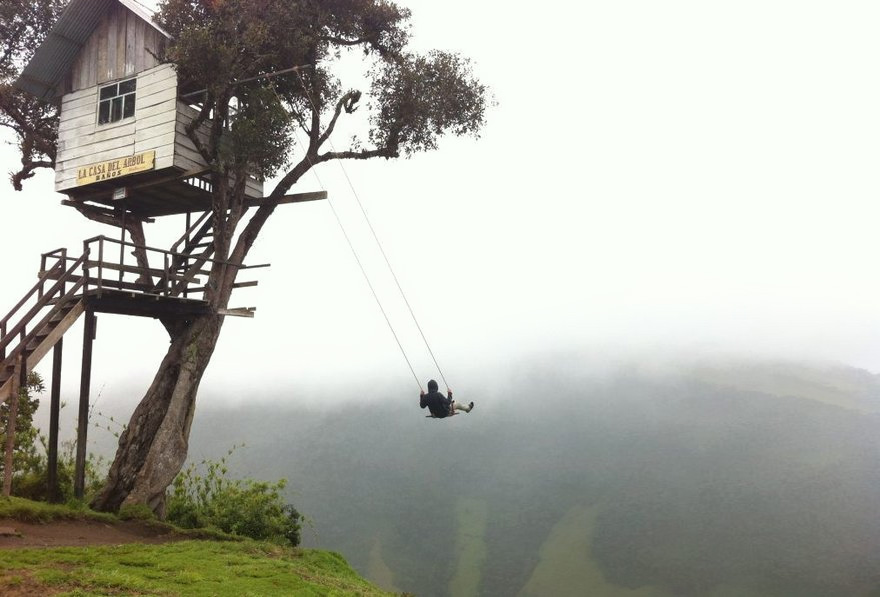
Ride the swing at La Casa del Arbol, a seismic monitoring station set up to observe Mount Tungurahua, the nearby active volcano. Take in panoramic views of mountains amidst your adrenaline rush as you swing out into the air and over the canyon.